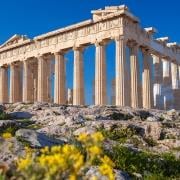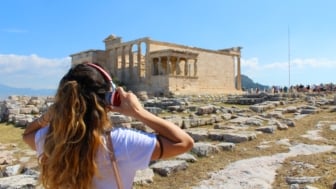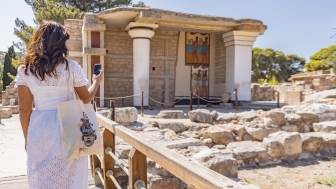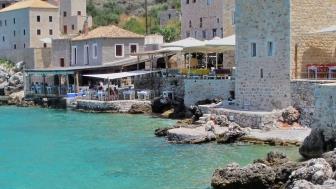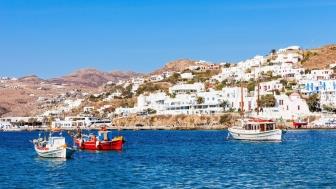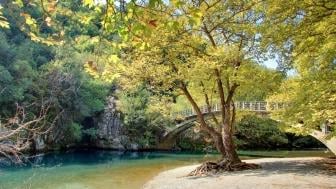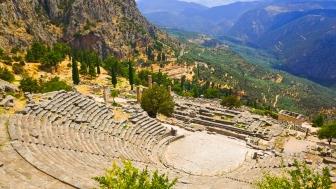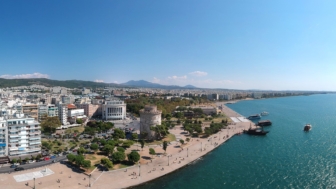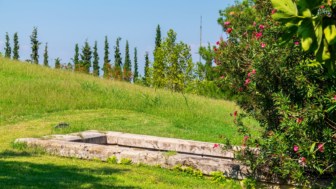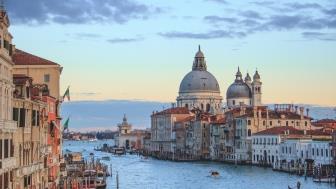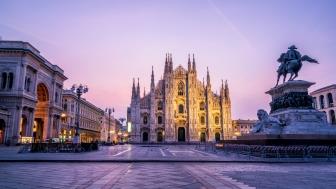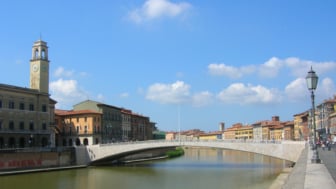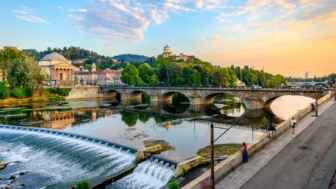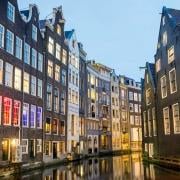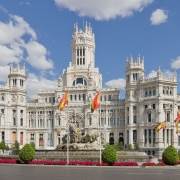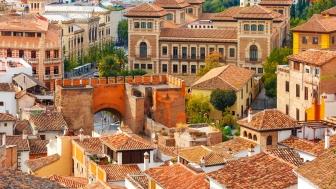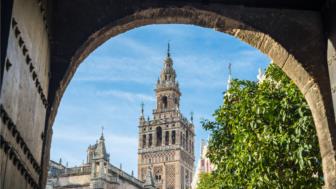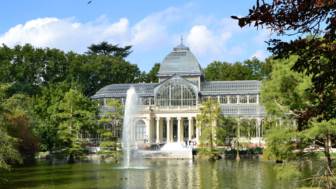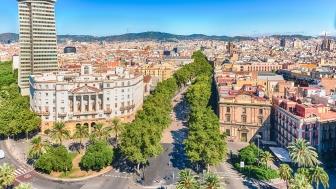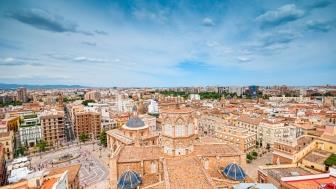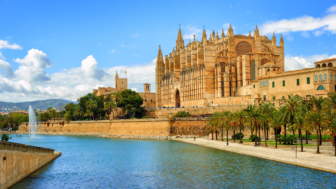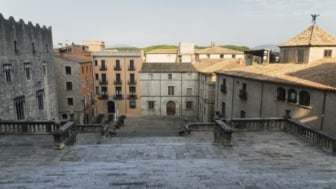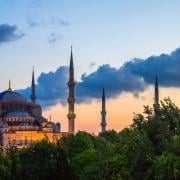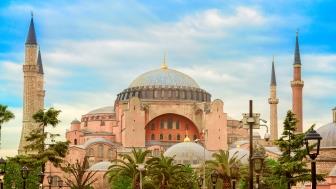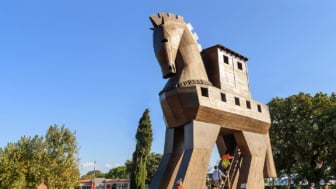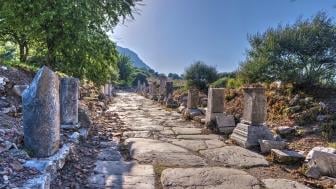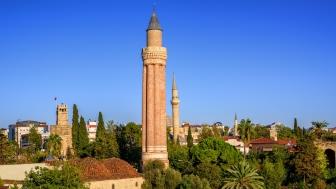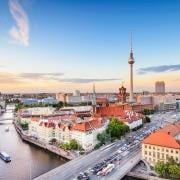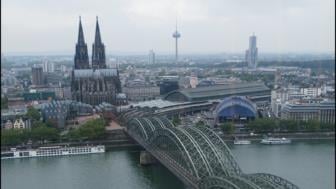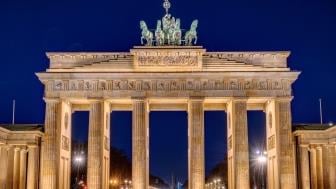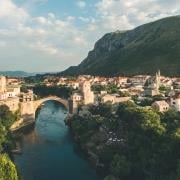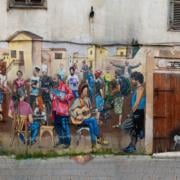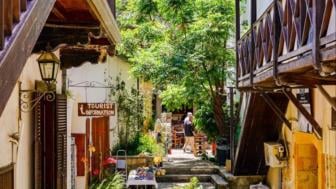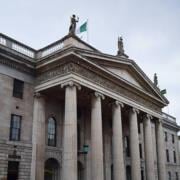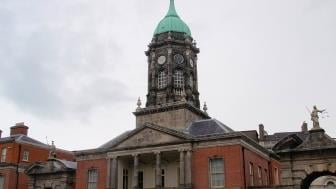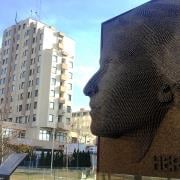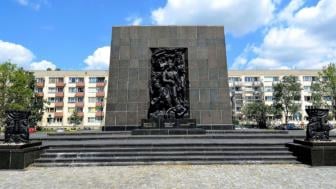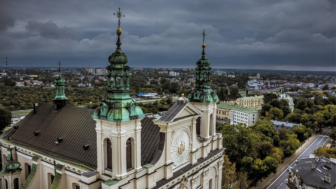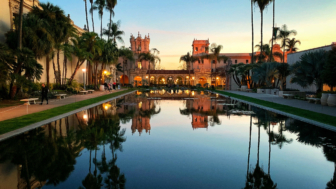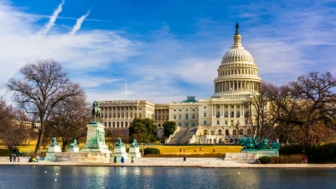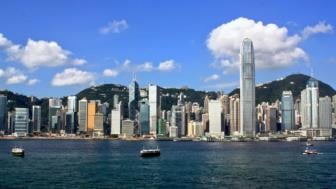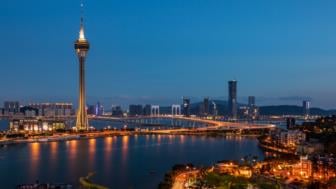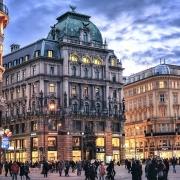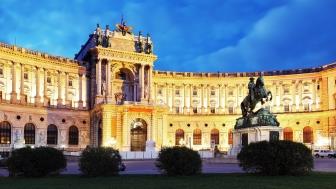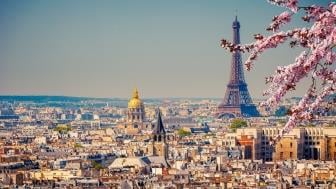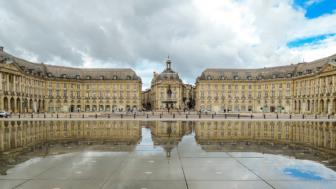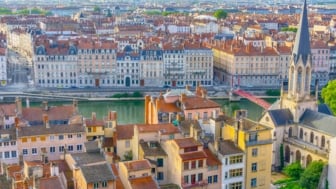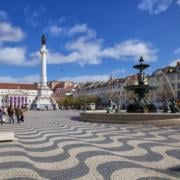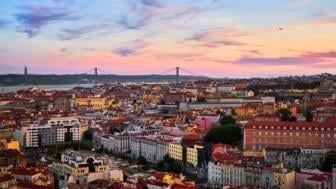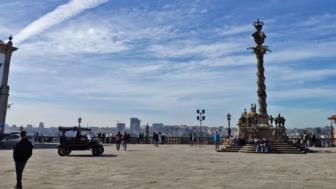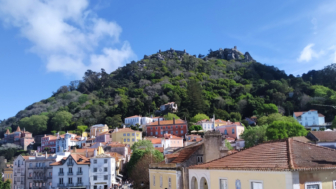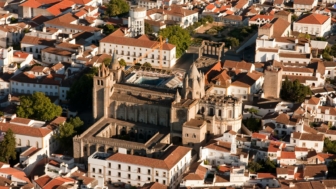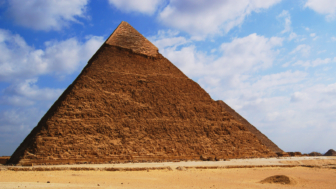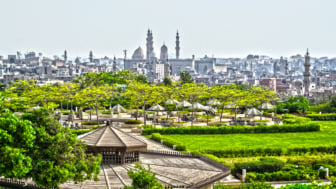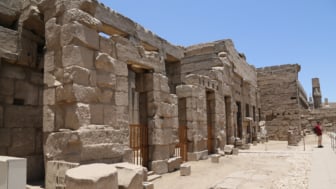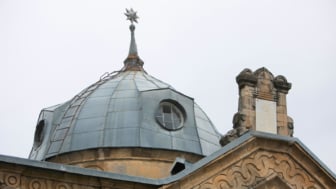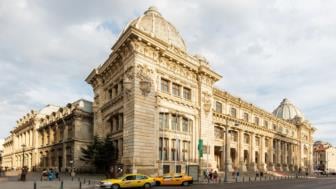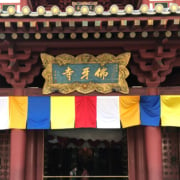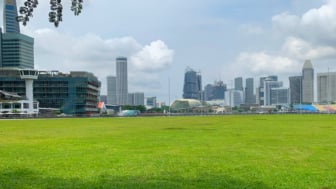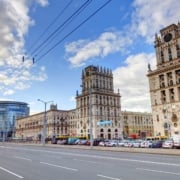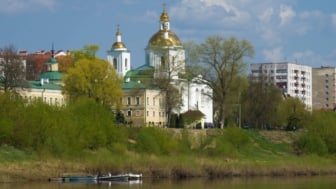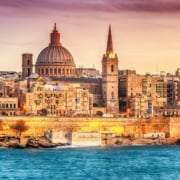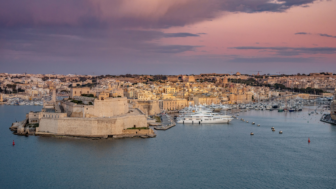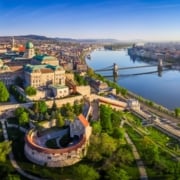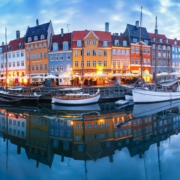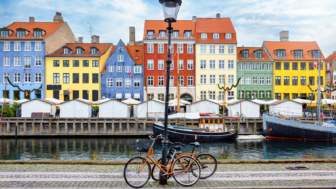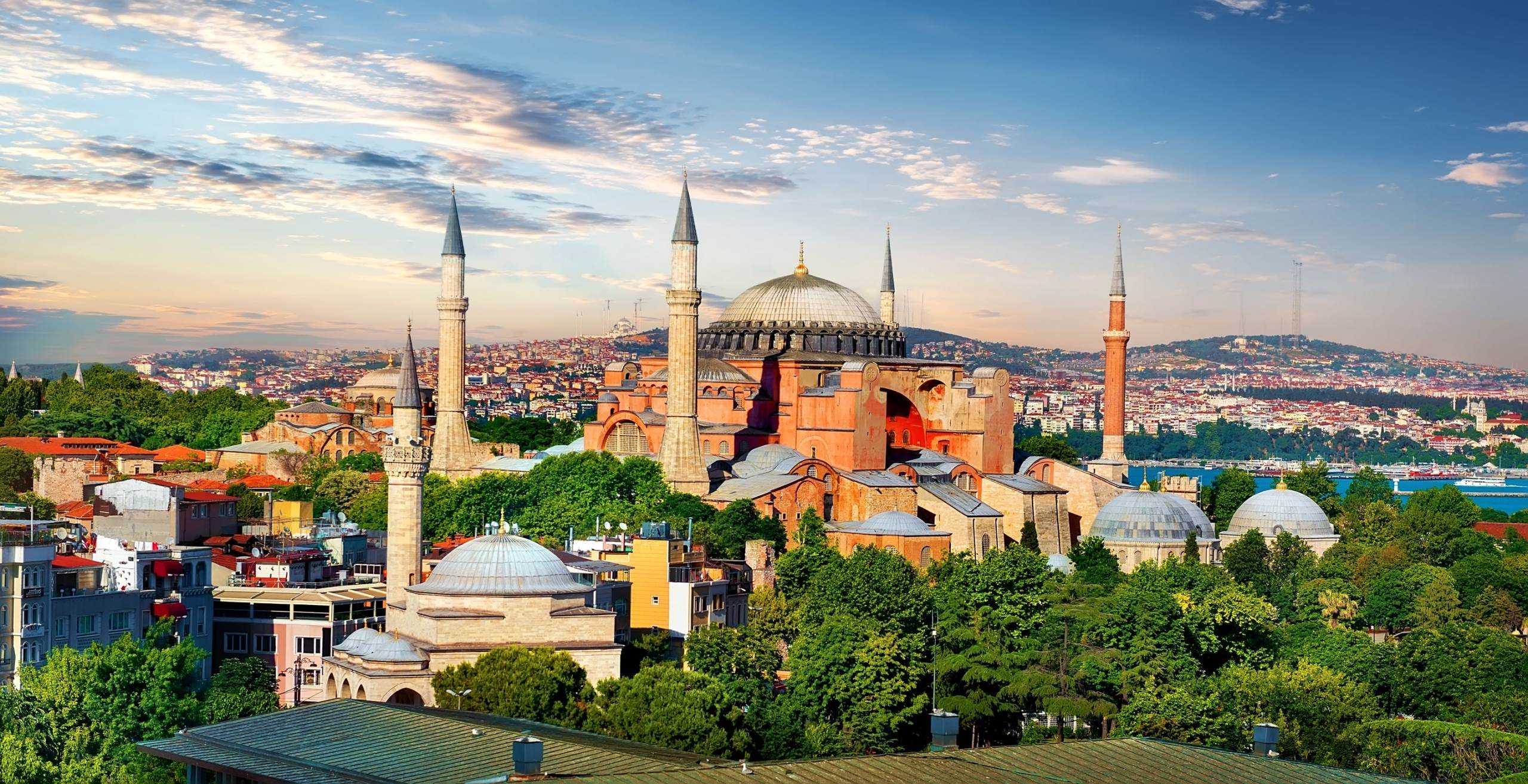In 324 the emperor Constantine the Great (r. 324-337) transferred the capital of the Roman empire from Rome to the East, to the ancient Greek colony of the city of Megara, Byzantium, where he decided to establish the new Rome, which took the name of Constantinople and legalized Christianity.
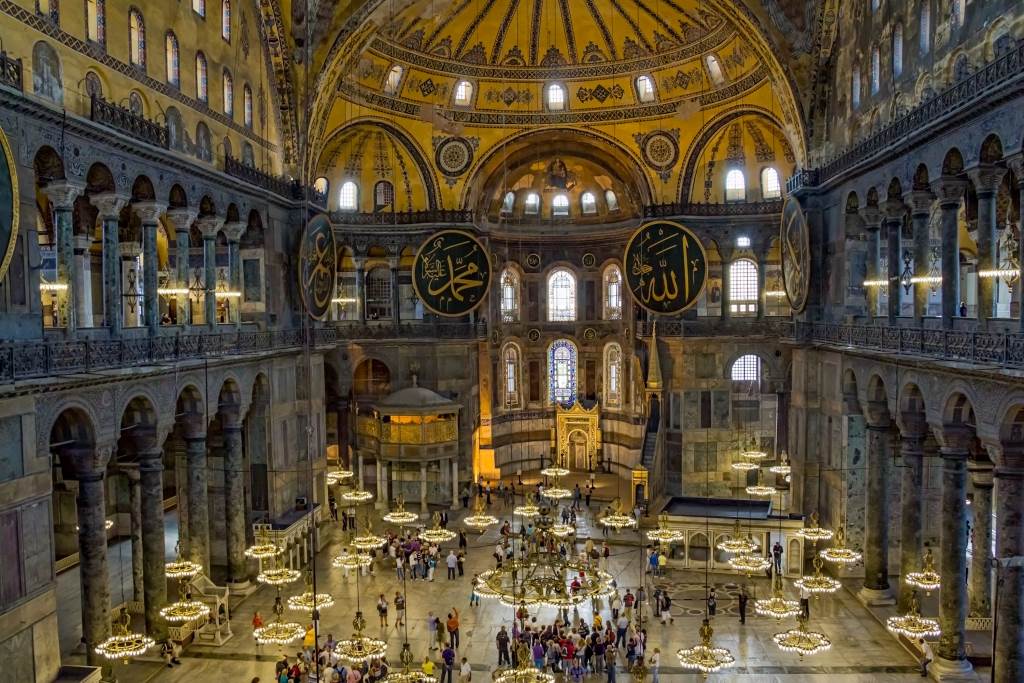
On direct order of Constantine, was built the cathedral of the city, the first Hagia Sophia, called Great Church (Μεγάλη Εκκλησία), which was inaugurated on 15 February 360, during the reign of his son, Constantius II (337-361). This first church, a basilica with galleries and a wooden roof, was destroyed during the riots in 404. The second church, a basilica with also a wooden roof, was built by the architect Rufinus during the reign of the emperor Theodosius II the Great (408-450) and inaugurated on October 415. This second church was burned down during the Nika riots of 532, in the reign of Justinian I (527-565). Fragments of it, marble blogs, have been excavated and can be seen today.
After the destruction of the church, on February, 532, the emperor decided to rebuild the basilica in her present form, between 532 and 537. The architects were Isidore of Miletus and Anthemius of Tralles. They built a great basilica with a large dome (sphere), the most impressive element in the structure. The church was decorated with a variety of marbles and stones from over the empire. After completion, Justinian is said to have exclaimed, Νενίκηκά σε Σολομών (Solomon, I have outdone thee!).
Next emperors decorated the church with gold mosaics. The original dome collapsed after an earthquake in 558 and it was rebuilt in 563. Hagia Sophia was the glory of Byzantium, an architectural miracle of the Middle ages. The church was converted into an Ottoman mosque, after the conquest of Constantinople on 29 May 1453, until 1931, when it was secularized and finally opened as a museum in 1935.
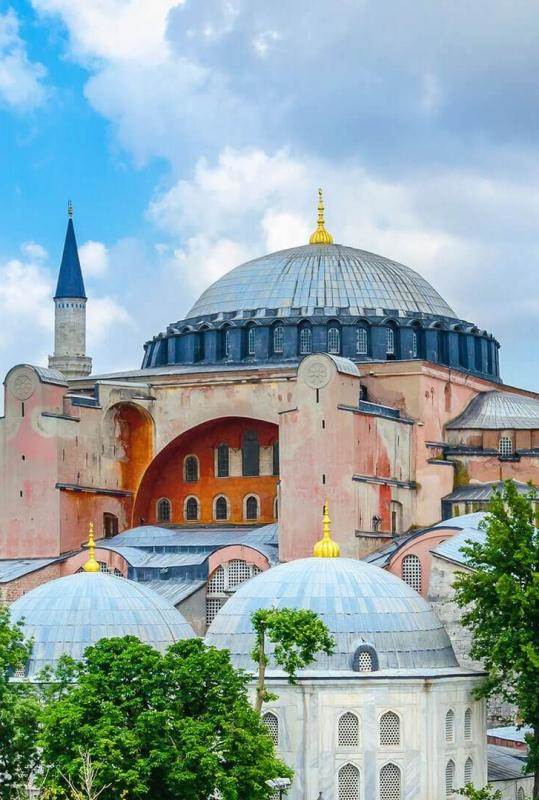
Today we can admire inside the Hagia Sophia the purple and green columns, the aniconic decoration during the reign of Justinian I, the beautiful Byzantine mosaics in the narthex, in the apse, in the gallery, the gigantic dome with the mosaics of Xexapoteryga, the empress’s Lodge in the gallery, the omphalion in the southeast of the nave, were the coronation of the byzantine emperor took place. We can see, also, the marble doors of Patriarchate in the gallery, the sarcophagus of the empress Irene in the outer-narthex and a beautiful ancient basin (Perirrantirio), the Nice door in the inner narthex, the oldest architectural element in Hagia Sofia, brought from a pagan temple in Tarsus. The tomb of Erricus Dandolo in the gallery reminds us of the sack of Constantinople in 1204.
When Hagia Sophia turned into a mosque, the byzantine mosaics were plastered over. Minarets were added. In the main church, a mihrab replaced the byzantine altar. Near it was built a minrab. We can also see the sultan’s Lodge, the Muessin’ s seat, the sultan’ s beautiful library decorated with Iznik tiles and the Islamic calligraphic roundels.

Get the tour of Hagia Sophia: the Wisdom of God and learn the turbulent history of the world-famous museum in the Byzantine capital Constantinopolis.


